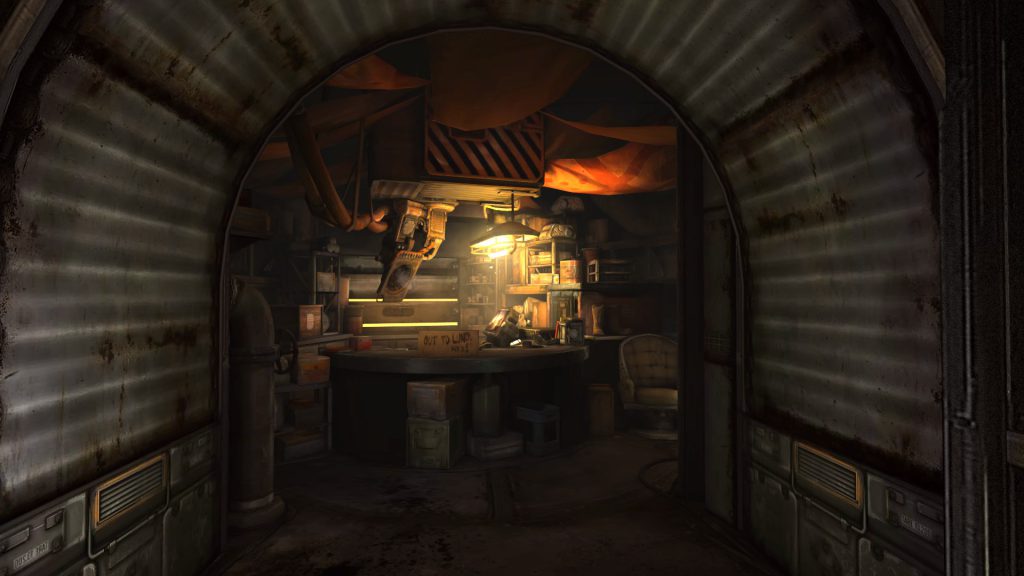
Video games always have certain limitations. Many of those limitations are inevitable while others could be rectified. Most limitations are directly tied to hardware, which can make it hard for any development studio to port a game on various different platforms. One limitation is how many textures you can cram into a scene at any given time. This turns out to be a big problem since artists have to worry about things like texture sizes, level of detail and a fixed texture budget they have to work around. Exceeding this texture budget, results in massive slowdowns which make a game virtually or completely unplayable. Another problem are repeating textures. Those are extremely distracting when they are blatantly obvious.
RAGE, id Techs new game at the time, was revolutionary. A beautiful highly detailed game world with an abundance of textures, transparencies, baked lights and shadows, all that without slowdown. Apparently the game is optimized to run at 60 frames per second on the Playstation 3. This was a big achievement at the time, due to the consoles unusual architecture. RAGE employes megatextures to prevent the game of running out of memory. This technology allows detail in the game world that was never seen anywhere else before. With details come compromises though, and RAGE has its flaws.
Megatextures make the game unplayable on PC though! Right?
No they don’t! Megatextures required more VRAM, which made them partly responsible for the horrible performance of the PC version of the game back in the day. Yet most problems we see today are mostly tied to the native configuration the game has in place and its automatic quality adjustment system it sports. The biggest problem, stuttering and crashes aside, was texture streaming. Every time the player turns around, they see textures popping up and slowly fading in over time, which in turn makes the game look horrible. This is not a megatexture issue and can be rectified by changing up some settings in a config file and by playing the 64bit version of RAGE. With those problems fixed, you can play RAGE at a comfortable and stable 60 frames per second. So, contrary to popular belief, RAGE is a rather well optimized game.
It is undeniable though that the shoddy performance on launch was blamed on the megatextures.

Simply put, there isn’t a single game out there that looks just like RAGE. Due to the megatexture technology, artists were able to literally paint in all the environmental details.Those include wear and tear and various kinds of debris. With the baked shadows, lighting effects, post processing settings and a lively cast of well animated characters, make the game world of RAGE come alive.
Another ace up RAGEs sleeve, are detail textures. Every texture in the game world features noise patterns. Those patterns are noticeable when viewed up close but not so noticeable when observed from afar. This noise makes objects appear a bit less static and thus the objects feel a bit more believable.

The incredible game world, comes at a cost.
Of course, there are some more issues though. Even though the Megatexture in its uncompressed form, is about a terabyte big, the textures in game are rather low resolution. From afar, a wall filled with graffiti, scuffs and stains looks incredible. But from up close, it is rather blurry and unrefined looking. Another problem which is partly to blame on the megatextures, is the rather static game world. There aren’t many moving parts and objects laying around. The most responsive interactions the game can offer, are explosions revealing entries into secret areas and item pickups. That is about it.
Is the compromise in fidelity worth it?

In my opinion, totally. The game world is detailed to a ridiculous degree. Any level designer and artist should consider RAGE a must buy for that reason alone. RAGE proved that it isn’t all about texture resolution and high polygon counts. The visual style alone makes the game stand out and it shows that the megatexture technology isn’t just a gimmick. Megatextures bring significant value to the table. Polygon counts and texture sizes get bigger and bigger, yet not much focus has been laid in this specific field of optimization.
Artists still have to worry about texture sizes and they still have to know how the systems behind a game work. With the improvement of texturing methods, games might not only run better on modern hardware, but maybe could improve the artists effectiveness in decorating levels. RAGE is a modern technical marvel and I recommend anyone with an interest in art or video game development, to pick up the game simply for that reason alone.

Will we ever see more games that employ the use of megatextures in the scale of RAGE? I don’t know, but I sure hope we will!
If you liked it, consider sharing it! If you want to watch more of my videos, you could subscribe to my YouTube channel, or join my Discord server.
Wanna read more? Check out another post.